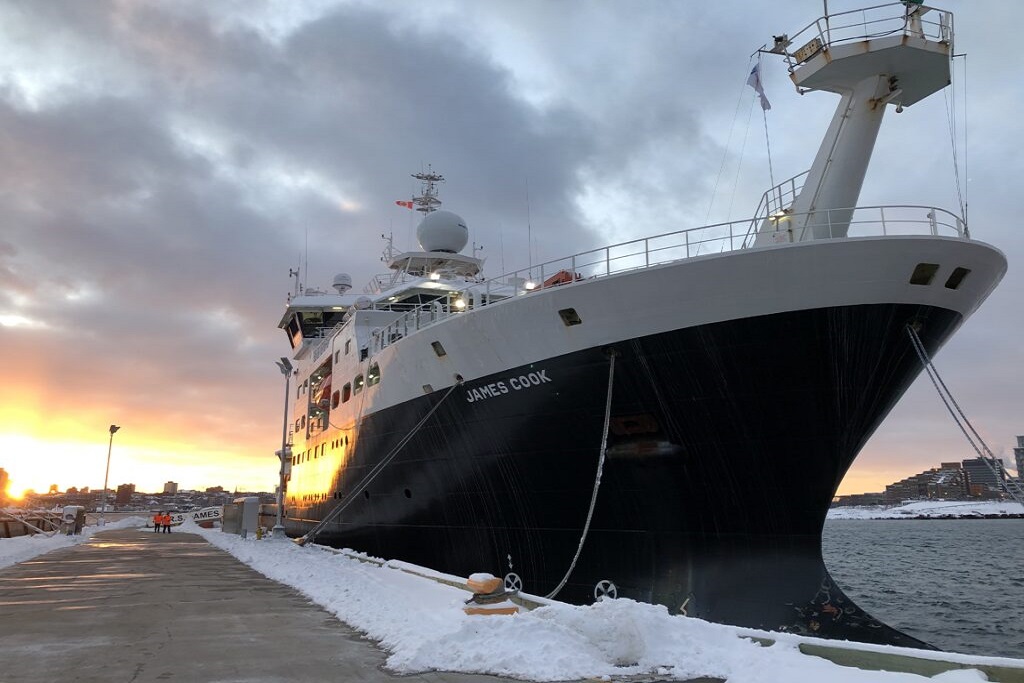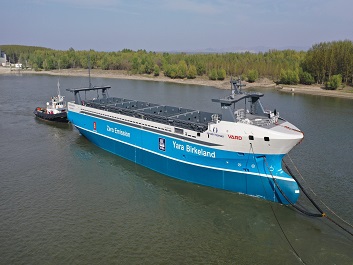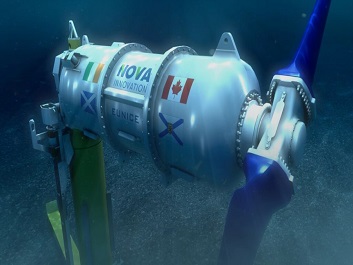NOC spearheads subsea cables monitoring project
The National Oceanography Centre (NOC) in the UK is leading a project to develop a system to improve the efficiency of offshore renewable energy generation and help develop the Blue Economy. The Submarine High-fidelity Active-monitoring of Renewable energy Cables (SHARC) has secured funding from Innovate UK Sustainable Innovation Fund. The SHARC project aims to improve the operational efficiency of offshore renewable energy generation by addressing failure management of critical subsea infrastructure, in this case submarine cables. Between 2014 and 2017, recorded cable failures across UK sites alone led to a cumulative loss of 227 million, highlighting the importance of innovations to improve cable failure-management strategies.Reducing these costs will make offshore renewables more competitive and accelerate their uptake, contributing to the UK Government Clean Growth Strategy and enabling net-zero carbon emissions. Furthermore, COVID-19 has increased the need for remote monitoring of assets. Remote monitoring can take place in socially distanced settings, removing the need to deploy crews offshore to operate in the tight confines of vessels. This approach is more economically efficient, as it will allow in-service fibre-optics to be remotely accessed. Additionally, it will reduce the health risks to employees by limiting their potential exposure to COVID-19, enabling the offshore renewable energy industry to build back better NOC explains. (Credits: www.offshore-energy.biz)

Norwegian marine minerals potential could be worth billions

Marine minerals could create 21,000 jobs and a $20 billion market for Norway in the next decades, Rystad Energy report says. That is the most optimistic estimate in a new Rystad Energy report on excavation of offshore minerals on the Norwegian Continental Shelf (NCS). We are looking to provide minerals for the green transition by utilizing the technology and competence from the Norwegian oil and gas industry,says Anniken Hauglie, CEO of the Norwegian Oil and Gas Association. A successful transition to the low-carbon society depends upon the availability of certain minerals, such as copper, cobalt, zinc and several rare earth minerals. Without these minerals, the transition from molecules to electrons – that is from fossil fuels to renewable energy will come to a halt. The onshore deposits of these minerals will be exhausted at some point, which is why we need to turn our attention to offshore deposits. Norway is likely to have viable resources on the Norwegian Continental Shelf, but this remains to be further explored, says Lars Eirik Nicolaisen, Senior Partner at Rystad Energy. His report shows that Norway can draw on 50 years of experience from the oil and gas industry. The transfer of knowledge from oil and gas to marine minerals is extensive in areas such as exploration, subsea, topside, drilling, and competence on corrosion and harsh weather. We already know how to operate and make a profit in the ocean space. And we are likely to find the resources on the NCS which will enable us to build a profitable and important industry for the transition to a low-carbon society,says Nicolaisen.(Credits: www.offshore-energy.biz)
The long-awaited zero-emission container vessel Yara Birkeland has been delivered to its owner Yara International, Norway-based shipbuilder Vard informed. Upon delivery, the vessel is scheduled to undergo testing for container loading and stability, before it sets sail to a port and test area in Horten for further preparations for autonomous operation.We were tasked with building a vessel prepared for autonomous operation which Yara will further develop until launch. The hull was built by Vard Braila and initially the plans for outfitting and delivery was for Vard Brevik, later transferred to Vard Brattvaag,” Vard said.(Credits: www.offshore-energy.biz)

US boosts 11 hydrokinetic projects with $35 million in research funds

The U.S. Department of Energy (DOE) has awarded $35 million for 11 projects which seek to develop new economically competitive hydrokinetic turbine designs for tidal and riverine currents. The funding has been announced as part of Advanced Research Projects Agency-Energy(ARPA-E) Submarine Hydrokinetic And Riverine Kilo-megawatt Systems (SHARKS) program. SHARKS projects address at least one of four generation use-cases: remote riverine energy, remote tidal energy, utility scale riverine energy, and utility scale tidal energy. Projects are encouraged to apply concurrent (as opposed to sequential) design methodologies: control co-design, co-design, and designing for operation and maintenance, according to DOE, which expects that these methodologies will significantly decrease the levelized cost of energy (LCOE) of the final hydrokinetic turbine design. Also, the projects will work to reduce the LCOE through multiple approaches, including increasing generation efficiency, increasing rotor area per unit of equivalent mass, lowering operation and maintenance costs, minimizing potential impacts on the surrounding environment, and maximizing system reliability.(Credits: www.offshore-energy.biz)
CSL cuts steel for ASKO’s two autonomous, electric ferries

The largest commercial shipbuilder in India Cochin Shipyard Limited (CSL) Kochi has hosted a plate cutting ceremony for two autonomous electric ferries being built for Norway-based ASKO Maritime AS. Torbj Johannson, Chairman of the board for ASKO ASKO MARITIME, cut the first steel plate for ship No.BY 146 through a video conference and Shri Suresh Babu N V, Director (Operations), CSL cut the first steel plate for ship No. BY 147 at the yard on November 25. CSL Kochi signed contracts for the construction and supply of the two ferries, with an option to build two more identical vessels, on July 15, 2020. The construction project is partially funded by the Norwegian Government with the aim of setting up an emission-free transport of goods across the Oslo fjord. The vessels will be managed by Massterly AS, the world’s first company established to take technical management and operate autonomous vessels. The company is a joint venture between autonomous technology major Kongsberg and the shipping company Wilhelmsen. The 67-meter long vessels will initially be delivered as fully-electric transport ferries, powered by a 1,846 kWh capacity battery. After commissioning of autonomous equipment and field trials in Norway, the ships will operate as fully autonomous ferries with the capacity to transport 16 fully loaded standard EU trailers in one go across the fjords each.(Credits: www.offshore-energy.biz)

